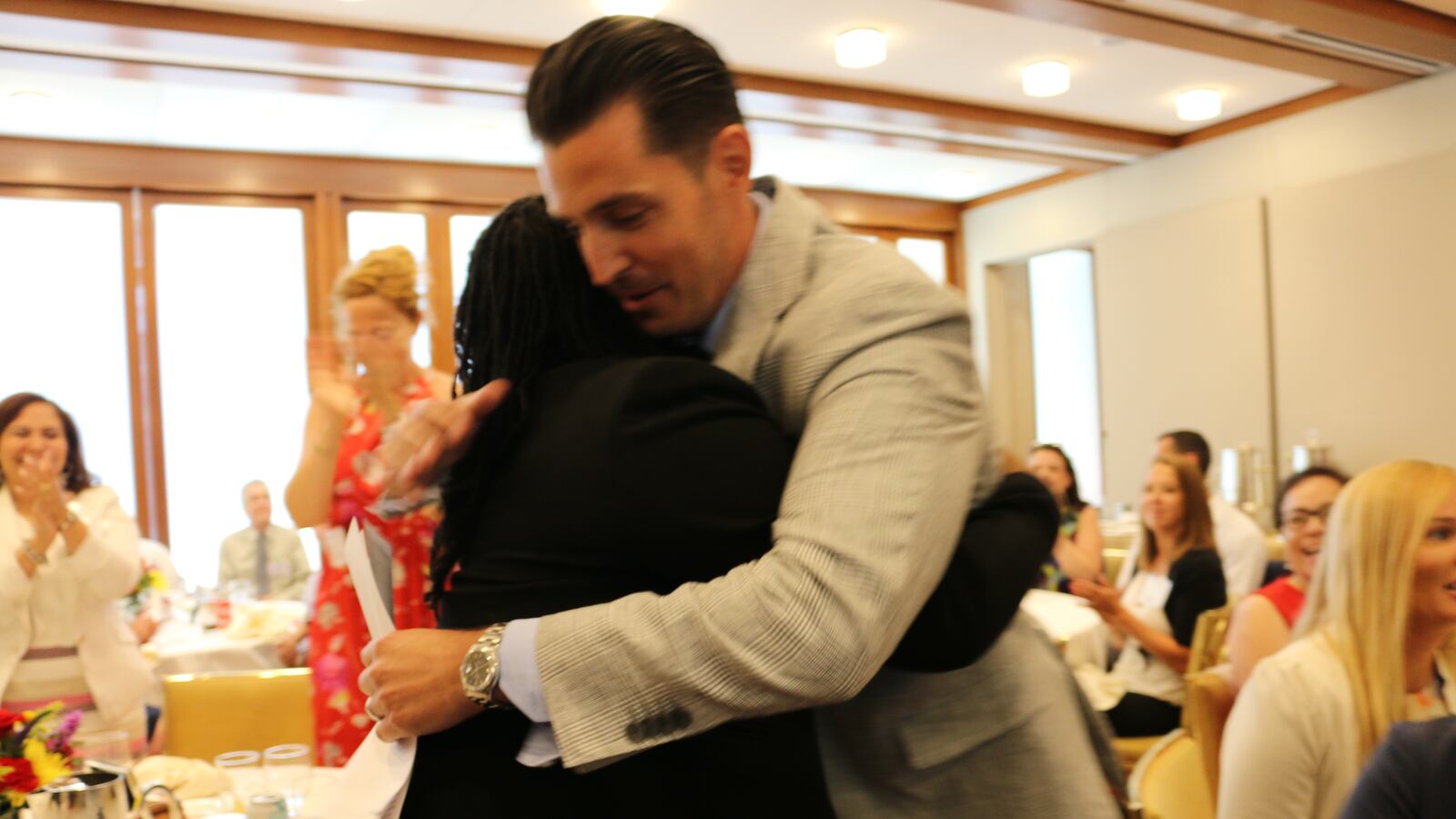Teachers at M.S. 343 in the South Bronx had a problem: Their lessons weren’t sticking.
Students initially would test well on fundamental concepts — such as multi-digit long division or calculating the rate of change. But that knowledge seemed to melt away on follow-up exams just months or even weeks later.
The solution that teachers developed, based on providing constant feedback to students and encouraging regular collaboration among staff, has helped M.S. 343 beat district averages on standardized tests. It has also landed the school a $25,000 prize.
This week, M.S. 343 won the Elizabeth Rohatyn Prize, which is awarded to public schools that foster great teaching. Presented by the nonprofit Teaching Matters, the award money will go toward building a digital platform that students and teachers can use to track their progress from anywhere, at any time.
The work at M.S. 343 starts with determining which skills teachers will emphasize and test throughout the year. Working together, teachers draw on what they already know about which concepts are most likely to trip students up, contribute to success in later grades or appear on standardized tests. A key concept could be understanding ratios in sixth grade or mastering scientific notation by eighth grade.
“It’s all in the teachers’ hands,” said Principal Vincent Gassetto.
Students are regularly tested with “learning targets.” But they’re also given three chances to prove they’ve mastered the skills. Gassetto said the approach is backed by neuroscience, which suggests the best way to learn is to use the knowledge multiple times, instead of cramming for a single test.
“That actually tells the brain: You’re being tested on this, it’s important. And that stores it in a part of the brain that’s easily retrievable,” he said.
Only the highest score will be recorded, which serves a different purpose: boosting students’ confidence in themselves as learners.
“We’re celebrating their progress, not necessarily the end result,” math teacher Lola Dupuy explained in a video the school produced. “It can be very confusing for a student to receive a failing grade and very discouraging for them if they don’t know … what they’re doing wrong and what they need to do to improve it.”
In between tests, each department comes together to analyze students’ answers. They zero in on common misconceptions and come up with a list of questions for students to ask themselves when reviewing their work.
Using the questions as a guide, it’s up to the students to figure out where they went wrong, often by working in groups with peers with varying skill levels.
“Students are more engaged in their work and the outcomes are better because they’re self-reflecting,” Dupuy said.
M.S. 343’s approach also gets at a common knock on testing: The results are rarely used to improve teaching and students often don’t have the opportunity to learn from their mistakes. At M.S. 343, teachers spend entire weeks meeting as a team to go over results and fine-tune their instruction. That time, Gassetto said, is a valuable resource.
“Most of the time, when you give a big assessment,” Gassetto said, “you’re testing, but for what purpose? We don’t do that. If we’re going to ask kids to sit down and take an assessment, we need to look at it and get it back to them right away, so it’s useful.”

